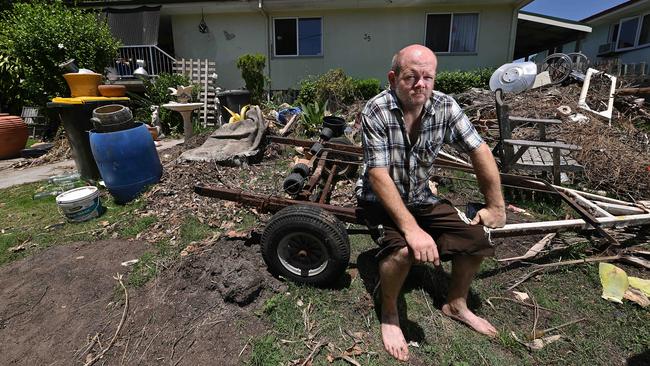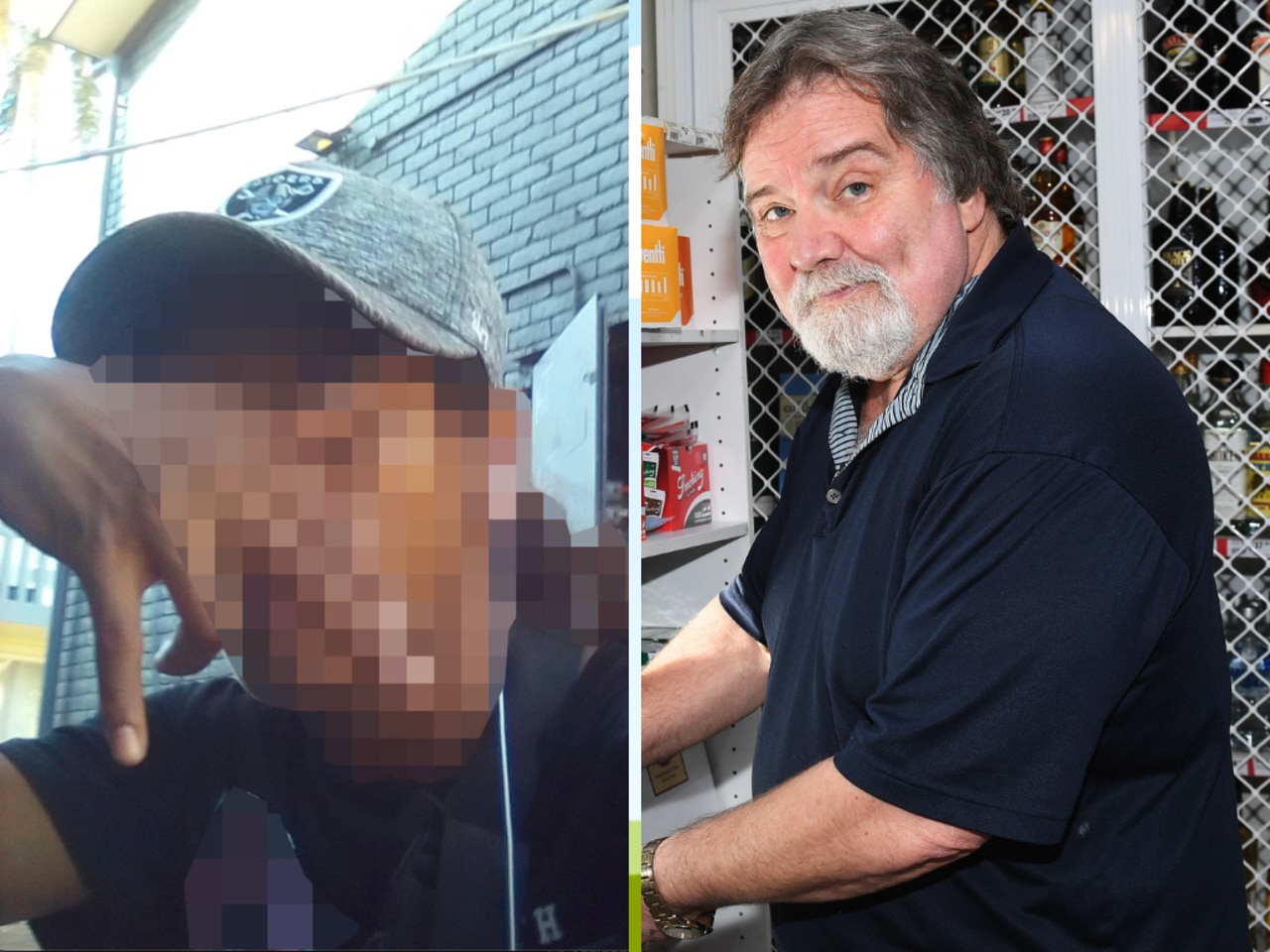Eleven kids but one missing – for 50 years
It looks like a bomb has gone off — a good reflection of what has happened to the lives of the Enright family since police first arrived at their door.

It looks like a bomb has gone off — a good reflection of what has happened to the lives of the Enright family since police first arrived at their door.
Strewn across the once-tidy front yard at 35 Polaris Street in Brisbane’s Inala is decades worth of personal belongings.
The long-forgotten junk had been stored under the house until police arrived last month and hauled it into public view as they scoured the property for evidence of a toddler missing for more than half a century.
Peter Enright was three or four when he was last seen among this strip of housing commission homes in the city’s outer west in the late 1960s.
Now his 76-year-old mother, Maureen Enright, is charged with his murder, in one of the oldest Australian cold cases ever prosecuted. According to police, Ms Enright’s differing versions about what happened to her son puts her in the frame for killing him.
But with police confirming Ms Enright had not admitted causing Peter’s death, and extensive searches failing to find a body, the allegations were in the crosshairs of a Supreme Court judge this week. Granting Ms Enright bail, judge Peter Callaghan said despite his specific request, prosecutors had been unable to identify a case against Ms Enright for murder.
“That allows me to conclude that the evidence against her is, at the very least, weak,” he said. “I might opine that it is not just weak but it is non-existent.”
In this oldest and strangest of cases, Ms Enright also has the staunch support of her son Kyle Enright, born a few years after Peter went missing.
Approached by The Weekend Australian, he said the accusations against his mother were “bullshit”.
“You couldn’t get a better mother. I stick by Mum and she’s always stuck by me,” he said.
Police say Peter was autistic, non-verbal and moved around by crawling. Remarkably, he is alleged to have been missing for more than 50 years before anyone outside his family noticed. The central question remains: Where is he?
Ms Enright, her husband Michael and their growing brood are understood to have moved into the three-bedroom, single-storey home in Polaris Street in about April 1966, when Peter was nine months old.
By then, at the age of 22, Ms Enright had four children and was pregnant with a fifth. The couple would have 11 children in total, four of them home births at Polaris Street. Mr Enright, a taxi driver, among other things, stood in as the “midwife” for the home deliveries.
In an area originally known as Serviceton, Inala was founded as a home for ex-servicemen seeking affordable housing in the latter part of the 1940s. It was taken over and expanded by the Queensland Housing Commission in the 50s. Neighbours this week said that at the time the Enrights arrived, their house had undeveloped land on one side and bushland across the street.
Police allege that two years after the Enrights moved in, Peter was no longer anywhere to be seen. One family friend allegedly recalls turning up at the home of Ms Enright’s mother at Christmas and seeing an unopened present for Peter under the tree.
The friend said he was told Peter — a slim, handsome boy with blond hair — was at his paternal grandmother’s home.
Life went on for the Enrights, and as other houses sprung up around them in Polaris Street, they stayed put.
Mr Enright was there until his death from bowel cancer in May 2018; Ms Enright still lived there, with son Kyle, when she was arrested last month. Police started investigating in August, after receiving information that Peter was missing and suspected to have been murdered.
Details are still to emerge, but it is understood an estranged relative spoke to police after hearing family rumours about a child being killed and buried under the Polaris Street home.
The state’s homicide squad, Inala Child Protection and Investigation Unit and child trauma detectives swung into action.
Investigators found that Peter John Enright was born at Brisbane Women’s Hospital on June 17, 1965. He would be 55 if alive today, but police say there has been no proof of life since September 1968.
Housing commission inspection records are alleged to have noted Peter’s existence — until they didn’t. Then the records allegedly showed one child less than there should have been.
Checks were made against nationwide adoption records, on police databases and with Medicare, Centrelink, banks, the tax office, churches and others. All came back blank.
While the other Enright children went to school, there were no education records for Peter, and no records of a name change.
In an interview with police, Ms Enright is alleged to have said Peter was an extremely difficult child who would constantly scream. After an argument with her husband she had threatened to leave with the children; her husband had responded by taking Peter to his mother’s house to look after him, Ms Enright said.
She went away for a few days and when she returned, Peter wasn’t there and she never saw him again. She said she accepted the assurances from her husband and mother-in-law that Peter was fine. But police allege Ms Enright has also made other claims, including that Peter was given up for adoption.
Police also allege Ms Enright claimed government benefits for Peter for years, and that one of Peter’s younger brothers, fifth-born Lee Enright, grew up thinking his real name was Peter.
With the help of his mother, Lee had obtained a driver’s licence in Peter’s name, and used Peter’s identity in a series of interactions with police, it is alleged.
Ms Enright’s solicitor, Andrew Bale, said while “it’s important these sorts of things be investigated, it’s equally important police shouldn’t jump to conclusions”.
Heather Muir, who has lived across the road for 40 years, this week said the suburb “used to be pretty rough” but was improving. Until police arrived last month, the Enrights’ house had appeared “nice and neat”, Ms Muir said.
Police brought ground-penetrating radar to Polaris Street, and searched the soil beneath the Enrights’ house as part of the search for Peter. They left after eight days, without finding remains.
Sifting through the debris that is yet to be cleared, Kyle Enright says his mother has dementia and that police have her all wrong, offering a story about his own childhood. “I was scared of going to school and the only way I’d bear it was if she sat under my classroom from start to finish,” he says. “And every day she was there for a whole year. I used to run out and check if she was sitting under the classroom — always there.”




To join the conversation, please log in. Don't have an account? Register
Join the conversation, you are commenting as Logout